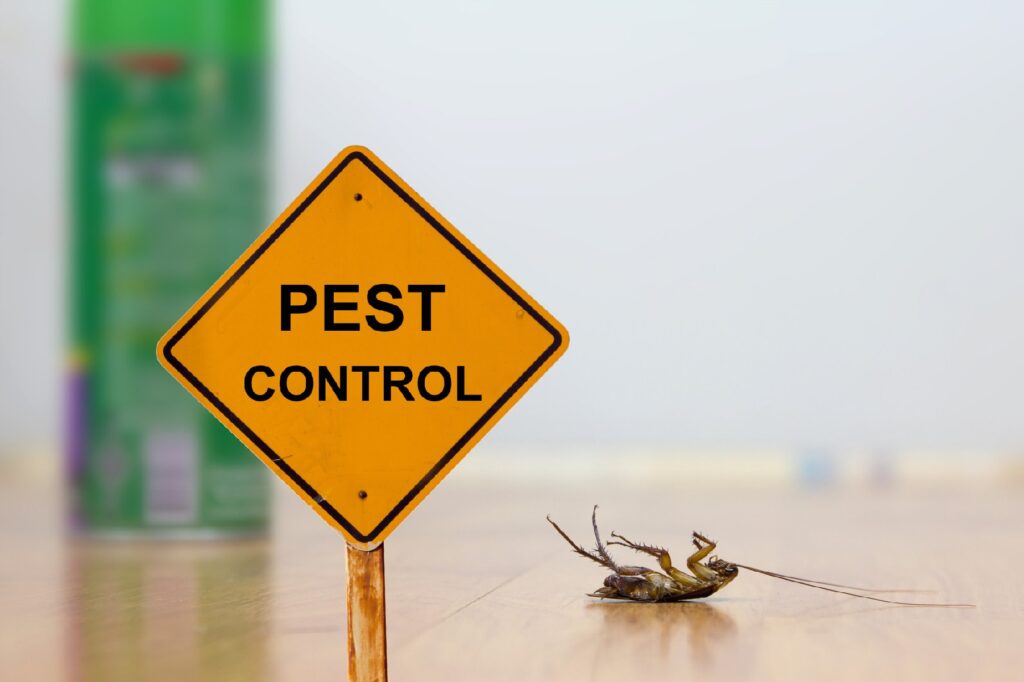Effective Insect Control Solutions: A Thorough Appearance at Elimination Techniques and Avoidance Actions
In the realm of pest control services, the successful management of infestations requires a careful strategy that incorporates numerous strategies and actions for both eradication and prevention. From Integrated Insect Administration (IPM) methods that prioritize sustainable services to chemical extermination techniques made for targeted removal, the collection versus insects is large and multifaceted. Biological control methods and physical avoidance actions supply different courses to efficiently combating undesirable trespassers. However, the key to a detailed insect control plan exists not simply in the techniques themselves, but likewise in the precise specialist evaluation procedures that come before and educate them. By understanding the ins and outs of each approach and just how they interplay, one can really realize the intricacy and effectiveness of contemporary insect control services.

Integrated Bug Monitoring (IPM) Methods
Integrated Parasite Management (IPM) Approaches incorporate a detailed strategy to pest control that concentrates on surveillance, prevention, and control approaches to successfully manage pest populaces. By integrating numerous methods, IPM aims to lessen the effect of bugs while also decreasing the dependence on chemical pesticides. Avoidance lies at the core of IPM, highlighting methods like correct hygiene, upkeep of hygiene, and securing entry indicate deter insects from infesting structures. Tracking plays a crucial duty in IPM by consistently checking and identifying parasite levels to determine the proper intervention limits. Control techniques in IPM prioritize using physical, biological, and social techniques prior to turning to chemical therapies as a last resource. These techniques consist of introducing all-natural predators, habitat adjustment, and employing capturing gadgets to keep parasite populaces in check. Generally, IPM promotes a ecologically mindful and sustainable strategy to pest administration, advertising lasting options that secure both human health and the ecosystem.
Chemical Elimination Strategies
Chemical extermination techniques are typically employed in insect control services to successfully remove bug populaces that present a danger to human health and wellness and home. These methods involve making use of various chemical substances specifically designed to target and eliminate parasites such as pests, rats, and various other undesirable creatures. The application of pesticides, pesticides, rodenticides, and other chemical agents is thoroughly managed to make sure optimum performance while minimizing dangers to human beings, family pets, and the environment.
One of the crucial advantages of chemical extermination methods is their capacity to provide quick and targeted results, making them especially valuable in cases of serious invasions or urgent bug control needs - a1 pest control in portland oregon bed bugs. Nonetheless, it is vital to highlight the relevance of appropriate handling, application, and disposal of these chemical products to stop unplanned harm
In addition, integrated bug monitoring (IPM) methods typically combine chemical extermination strategies with other approaches such as hygiene, environment adjustment, and biological controls to produce a extensive and lasting insect control strategy. By including chemical elimination methods sensibly within an IPM framework, pest control solutions can properly handle insect populations while reducing possible risks to human health and the environment.
Organic Parasite Control Techniques
Employing natural predators and bloodsuckers to manage pest populations is a sustainable method known as biological pest control. a1 bed bugs exterminator portland. One typical biological control technique includes introducing natural enemies of the target insect species, such as ladybugs for aphid control or nematodes for termite problems.
An additional efficient biological control strategy is using microbial pesticides. These are naturally occurring microorganisms, such as microorganisms, viruses, and fungi, that especially target and contaminate certain insect species. By making use of these microbial agents, pest populations can be properly lowered without harming helpful microorganisms or creating damage to the atmosphere.
Physical Bug Avoidance Procedures
Applying physical parasite prevention procedures entails using obstacles and architectural adjustments to prevent bugs from infesting a building or entering. Setting up door sweeps, screens on windows, and sealing fractures in the foundation can help avoid insects like bugs and rodents from acquiring access indoors.
Another physical prevention measure is the usage of obstacles like secure fencing to maintain larger parasites such as raccoons or deer away from the residential property. By implementing these physical insect prevention measures, home proprietors can substantially minimize the risk of bug problems and the damages they can create.
Expert Pest Assessment Treatments
Conducting comprehensive and organized pest examinations is a fundamental facet of expert parasite administration methods. Expert parasite examiners are educated to carefully examine properties for indications of infestations, determining pest varieties, entrance factors, and favorable problems.

Verdict
To conclude, efficient pest control solutions use a selection of strategies, consisting of Integrated Bug Monitoring strategies, chemical elimination approaches, organic controls, and physical prevention procedures. Specialist insect examination treatments play a vital duty in recognizing and dealing with pest problems in a timely fashion. By implementing a mix of these methods, homeowner can effectively handle and stop parasite problems.
From Integrated Bug Management (IPM) strategies that prioritize sustainable solutions to chemical extermination techniques made for targeted removal, the toolbox against parasites is diverse and vast.Integrated Pest Monitoring (IPM) Methods incorporate a detailed strategy to pest control that concentrates on tracking, prevention, and control approaches to efficiently manage parasite populations.Chemical extermination techniques are frequently utilized in parasite control solutions to efficiently remove parasite populations that pose a danger to human health and residential property.Employing natural predators and parasites to handle parasite populations is a lasting technique known as biological pest control.In verdict, effective bug control solutions use a selection of methods, consisting of Integrated Insect Administration approaches, chemical extermination methods, organic a1 bed bugs exterminator portland controls, and physical avoidance measures.